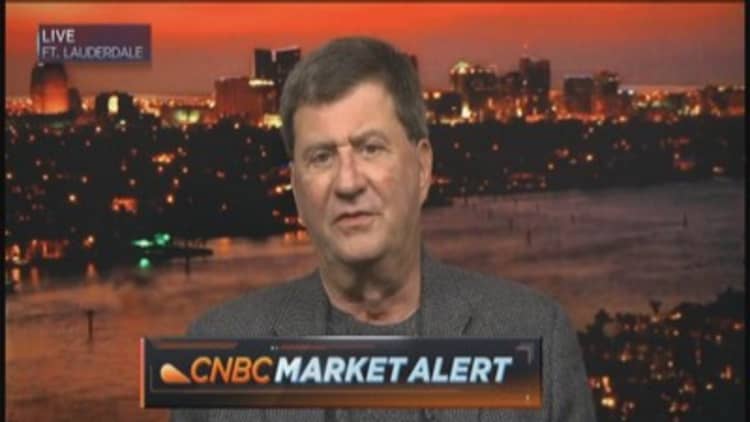A surprise interest rate hike by the Russian central bank late Monday night left analysts debating whether such "panicked" moves by officials have any genuine impact.
Russia delivered an emergency 650 basis point rise to its main base rate at an emergency midnight meeting, but traders had other ideas with the ruble crumbling to a new record low the following session, testing the bank's credibility.
Russia isn't the first emerging market to issue such a rushed policy change. It's Turkish counterpart delivered an eye-popping hike to its overnight lending rate, increasing it to 12 percent from 7.75 percent, back in January. The move was designed to defend the country's embattled currency and worked for several months with the lira only recently hitting its 2014 low against the dollar, amid the strains of the current emerging market rout.
Read MoreWhyRussia's monster rate hike spells trouble ahead
"Turkey's did work...in my view," Timothy Ash, the head of emerging markets research at Standard Bank, told CNBC via email. "The message for central banks is be decisive....not half-baked."
Christian Schulz, a senior economist at Berenberg Bank, told CNBC that the Turkish hike may not have completely stemmed the country's currency crisis but it did ensure a more orderly depreciation for the lira. The other example he gave was the policy move by the Reserve Bank of India (RBI) Governor Raghuram Rajan when he helped draw a line under 's fall in 2013, despite being fresh into his job at the central bank.
Emergency rate hikes could all have technically worked in the sense that currency collapses might have been even worse without them, Schulz added.
"We can't do the counterfactual. They can at best stop a market panic, but not reverse underlying revaluation needs," he told CNBC via email. "Emergency rate hikes have to be credible, i.e. sustainable, over a longer period of time and accompanied by other measures such as economic reforms."

For one clear example of a spectacular failure by a central bank, analysts have to go back into the history books to the early 1990s. The U.K. had opted to tie its currency to the central exchange rate used in Europe but had to make a dramatic U-turn on September 16, 1992 - now known as "Black Wednesday" - as sterling was frantically sold on currency markets.
The U.K.'s lending rate was raised to 12 percent during the day and another rise to 15 percent was planned but was never implemented. Bob Parker, a senior advisor at Credit Suisse, called this the best example of a rate rise that didn't work and believes that they should never be delivered in solitude.
Read MoreRussian rate hike fails as ruble crumbles
"Other actions such as (foreign exchange) intervention, restrictions on capital flows and macro policy changes are required," he told CNBC via email.
"In the case of Russia, it needs to convincingly turnaround capital flows."


